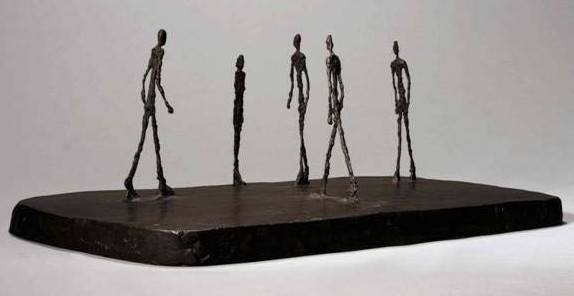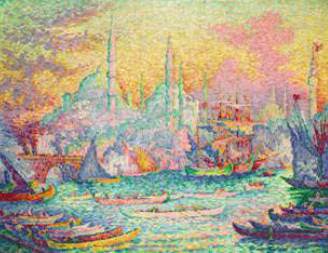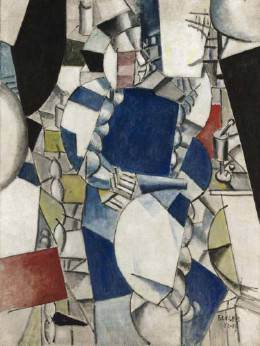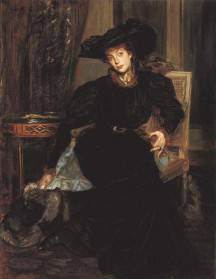
Claude Monet: “Le Pont du chemin de fer à Argenteuil”

Alberto Giacometti – La Place II

Paul Signac – “La Corne d’or”
CHRISTIE’S NEW YORK SPRING IMPRESSIONIST AND MODERN ART EVENING SALE TO OFFER EXCEPTIONAL MASTERWORKS THAT SPAN THE ENTIRE COLLECTING CATEGORY
Signature Monet Paintings From His Early and Late Periods – The Strongest Group Of Alberto Giacometti Works To Appear At Auction Since 1987 – Expressionist Explorations In Color And Form From 20th Century Masters
]]>
May 1st 2008 – Christie’s New York Spring 2008 Impressionist and Modern Art Evening Sale takes place on May 6 and is a well-edited and focused 58-lot auction that features prime examples from every movement of the category. From High Impressionist 1870s masterworks to post-war paintings and sculpture, the sale’s theme is one of over-arching quality, with a rich selection of works from the
leading artists of the era.
Expected to realize between $287 and $405 million, the auction has the third highest pre-sale estimate in the category’s history, and includes great painterly achievements by Claude Monet, Paul Signac, Kees Van Dongen and Henri Matisse – along with a remarkable selection of sculpture, with a highly important group of works by Alberto Giacometti, as well as masterpieces by Auguste Rodin and Henry Moore.
Two Claude Monet Masterpieces
The sale includes three works by the quintessential Impressionist master, including Le Pont du chemin de fer à Argenteuil, one of the greatest Impressionist pictures left in private hands. Painted in 1873, Le Pont du chemin de fer à Argenteuil is a rare and luminous masterpiece of high Impressionist style and a hugely significant work in Monet’s oeuvre (estimate on request). The picture may break the world auction record for the most well-known and soughtafter Impressionist painter (separate press release available on request).
Le Pont du chemin de fer à Argenteuil contains all the trademark themes of Monet’s early work of the 1870s. The auction also features Nymphéas, painted in 1908, a canvas that dates to Monet’s most creative and productive period of his late career. During the last two decades of his life, Monet devoted himself almost single-mindedly to depicting his water garden at Giverny and produced an astonishingly complex series of around two hundred canvases that constitute some of the most innovative and influential works of his entire oeuvre. This canvas was featured in the inaugural exhibition of the series at the Galerie Durand-Ruel in 1909, an exhibition that received an overwhelmingly positive critical response, with one critic declaring the series a supreme achievement, ranked alongside Michelangelo’s Sistine Chapel and Beethoven’s last string quartets (estimate: $10,000,000-15,000,000).
A Superlative Giacometti Group
The most impressive group of Giacometti sculpture and paintings to appear at auction since Christie’s sale of the Lambert Collection in 1987 form a central thread in the Spring sale. Featuring two spectacular bronzes, two important and unique plasters and one painting, the works are exceptional in quality and rarity, and will offer collectors an unrivalled opportunity to source the very best from the celebrated modern master this Spring. The group is led by the monumental nine-foot high bronze Grande femme debout II, 1959/60 (estimate on request) and the multiple-figure work La Place II, 1948/49 (estimate on request), with both marked no.1 from their respective editions.
Modernist Explorers of Color and Form
Last season in New York, Christie’s set a new world auction record of $33.6 million for one of the leading modernist explorers of the expressive power of color and form, Henri Matisse. In this sale, an important portrait from his Nice period, Portrait au manteau bleu, will be offered at auction for the very first time (estimate on request). He painted this Fauve-inspired tour-de-force of expressive color and lyrical line in 1935, and was his first major portrait of Lydia Delectorskaya, the young Russian woman who had recently become his favorite model. A contemporary depiction of a well-to-do and absolutely modern woman, Matisse imbues the sitter with an air of seriousness, individuality and personal dignity, qualities that the painter has underscored in his choice of deep-toned color relations. An expression of sensibility over sensuality, of reality over reverie, the forms in the sitter’s figure are absolutely flat, with the suggestion of depth created purely by zoned color contrasts.
Paul Signac, a leader of the Neo-Impressionist cause and its founding principles of divided color and scientific method in the late 19th century, helped lay the groundwork for the Fauves and the further exploration of color and form. His work La Corne d’or from 1907 bridges both his earlier scientific, theoretical color exploration, along with his more mature, liberal and vibrant approach to its use and application (estimate: $5,000,000-7,000,000). He befriended the Fauves in 1903/04, and his mature, independent style developed, with wider, looser brushstrokes, along with a more variegated, decorative patterning that begin to breakdown form and offer a point of origin for abstraction. The present work is a consummate example from this period, and creates a brightly harmonious seascape out of Oriental color and Mediterranean light, casting an incandescent, romantic glow over Constantinople harbor.
Other Sculpture Highlights
Beyond the Giacometti grouping, the sale includes a particularly strong sculpture section, including Eve, grand modèle-version sans rocher by Auguste Rodin (estimate: $9,000,000-12,000,000), and Family Group, 1946 by Henry Moore (estimate: $2,500,000-3,500,000).
initially conceived Eve to accompany the figure of Adam as a pair of flanking sculptures for the Gates of Hell, and the bronze marks one of the great turning points in modern sculpture. Its rough and freely worked surface is more like that of a wax or plaster model that a Salon bronze, and this divergence from convention to a more expressive conception of surface texture and material finish is the defining characteristic of Rodin’s later, revolutionary style. This cast was François Rudier’s première épreuvre of the work, and was purchased in 1897 by collector Auguste Pellerin, after his unsuccessful bid for Rodin’s scandalous Balzac sculpture. It exemplifies Rodin’s mastery as a narrative artist, with Eve turning in upon herself protecting her newly vulnerable body, revealing her sin and fall from grace. This cast remained in the Pellerin Collection for more than a century and when it last appeared on the market, it established a world auction record for the artist.
Moore, one of the leaders of British 20th century modern sculpture, executed this Family Group the year his first and only child, Mary, was born (estimate: $2,500,000-3,500,000). The Second World War had ended the year before, and with the coming of peace and the arrival of a child after sixteen years of marriage, Moore was inspired to return to an earlier recurrent motif of mother and child that allowed him to create this modern symbol for the enduring value of the familial bond
Follow us on:


